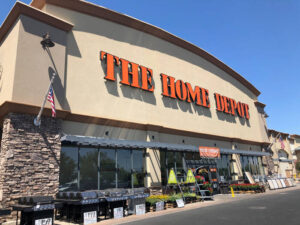Navigating Retail Trends in a Tariff-Fueled 2025: Insights from Extreme Investor Network
As we venture into 2025, the U.S. economy exhibits strong undercurrents, bolstered by low unemployment rates and real wage growth, according to the latest from the National Retail Federation (NRF). Yet, a cloud of policy uncertainty persists. The unpredictable nature of tariffs and ongoing legal disputes surrounding them is beginning to wear on both consumer and business confidence.
The NRF anticipates retail sales growth between 2.7% and 3.7% this year, projecting totals between $5.42 trillion and $5.48 trillion. This outlook is consistent with the 3.6% growth experienced in 2024 and mirrors the pre-pandemic decade’s average annual growth. However, the retail landscape is transforming, presenting unique challenges and opportunities in an increasingly complex economic environment.
In this second installment of our series, we will explore how major retailers are adapting to the volatility wrought by these tariff issues and what this means for savvy investors like you.
Home Depot (HD): Steadfast Pricing Amid Economic Headwinds
Home Depot recently missed its Q1 earnings expectations but was quick to reaffirm its full-year guidance, demonstrating operational confidence despite external challenges. CFO Richard McPhail has made it clear that the company will avoid price hikes in response to tariffs, leveraging its scale and strong supplier relationships as buffers.
Importantly, over half of Home Depot’s inventory is sourced domestically, with no single country outside the U.S. expected to represent more than 10% of imports by next year—a strategic move that indicates a long-term shift away from dependency on Chinese suppliers. However, high interest rates are hindering demand for home improvement products, and if tariffs increase costs too significantly, the company may be forced to take certain items off the shelves entirely.
For investors, Home Depot’s commitment to stability and customer loyalty could lead to a more resilient stock in a cooling housing market.
Lowe’s (LOW): Pricing Strategy Adjustments on the Horizon
Lowe’s reported a smaller-than-expected sales drop in Q1, buoyed by steady demand from contractors. Like its rival, the company aims to remain price competitive but has flagged potential price increases later this year as new, tariff-affected inventory rolls in.
CFO Brandon Sink has projected flat profit margins this fiscal year, revealing that Lowe’s is currently absorbing some near-term cost pressures due to its diverse sourcing strategy. With 60% of its products sourced from the U.S. and 20% from China, further shifts in sourcing could play a critical role in maintaining its position in the market.
Investors should keep an eye on incremental pricing shifts as the year progresses, especially with the transition to newer, costlier inventory.
Best Buy (BBY): A Selective Approach to Cost Adjustments
Best Buy reported solid Q1 earnings but adjusted its full-year outlook downward, attributing this to the adverse effects of tariffs and softening consumer demand. The retailer has already increased prices on certain electronics sourced predominantly from China, including popular items like smartphones and appliances.
CEO Corie Barry emphasized that although price hikes were a last resort, they are now in effect for a limited selection of products. China’s share of Best Buy’s imports has decreased significantly, now at 33%, while U.S. and Mexican goods make up roughly 25%.
Despite current demand holding steady, mounting margin pressure and uncertainties surrounding future tariffs necessitate a careful reevaluation of pricing strategies moving forward.
Dollar Tree (DLTR): Evaluating the Impact of Tariffs on Core Value
For retailers like Dollar Tree, where every cent counts, tariffs pose a significant threat to their fundamental business model. Following a price increase from $1 to $1.25 in 2021, the company is considering further price hikes on select products due to rising costs.
CEO Michael Creedon highlighted that the initial 10% tariffs on Chinese goods were costing the company around $15–$20 million per month, though they have managed to mitigate approximately 90% of this impact. New tariffs affecting products from Mexico and Canada could soon impose an additional $20 million monthly burden.
Interestingly, Dollar Tree is witnessing an uptick in demand from higher-income customers, suggesting that the quest for value is transcending economic barriers.
Investor Takeaways: Understanding Market Dynamics
For investors, the current landscape poses intricate challenges. U.S. consumer spending remains surprisingly resilient, yet the looming specter of rising retail prices and cost-cutting measures hints at deeper strains beneath the surface.
Some retailers are making cautious moves, lowering guidance that could signal trouble for stockholders seeking stability. The implication of tariff-driven margin compression could weigh heavily on retail earnings, particularly as trade tensions evolve.
With the unpredictable nature of tariffs complicating supply chain decisions, businesses are grappling with how to forecast costs and market conditions effectively.
Investors should remain vigilant, particularly during the upcoming earnings season, focusing on firms with robust supply chain flexibility and digital infrastructures. Companies poised to pivot quickly—through diversified sourcing and leveraging scale—are more likely to maintain their competitive edge.
In this ever-evolving landscape, understanding the ripple effects of tariff changes and economic pressures is critical. Retailers are now making pivotal decisions that will resonate throughout the market, impacting both consumers and investors alike. At Extreme Investor Network, we are committed to navigating these complexities and arming you with the insights needed to thrive in this volatile environment. Stay tuned for our continued analysis as we monitor these developments closely!

